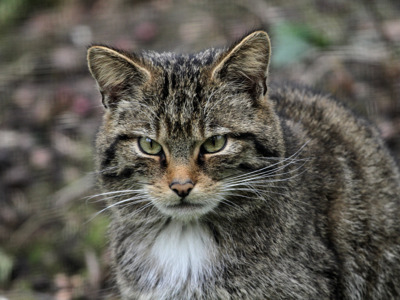
Wildcat captive breeding and research
Wildcats used to be found throughout the UK but now their range has been limited to the remotest parts of Scotland. Their numbers have rapidly declined due to persecution, habitat loss and fragmentation, disease spread by feral cats and the dilution of the wildcat genes through interbreeding with domestic cats.
The wildcats held at Wildwood are part of the national captive breeding programme. The studbook for the species is held by the Royal Zoological Society of Scotland (RZSS) who make breeding and pairing recommendations in order to maintain a genetically viable captive population.
Wildwood is hugely successful with breeding wildcats, which are generally quite a tricky species to breed. In June 2020 Wildwood Trust announced our delight to be working in partnership with Durrell Wildlife Conservation Trust and Vincent Wildlife Trust (VWT) to restore species of conservation concern to Britain, with a particular focus on the European wildcat (Felis silvestris).
Wildwood Trust, Durrell and VWT are pooling their skills, knowledge and experience to establish a self-sustaining population of wildcats outside Scotland. Currently, the only wild population of these rare cats is in the remote Highlands. However, this small population has been declared “functionally extinct” as interbreeding with feral cats has resulted in them having the same gene pool as domestic cats. The long-term goal of this project is to establish a self-sustaining wildcat population in an ecologically suitable landscape outside of Scotland.
Staff at Wildwood Trust are working in partnership with the University of Kent on research into den box preferences of wildcats which will improve breeding success of the species but also support the future breeding of wildcats released into the wild.
